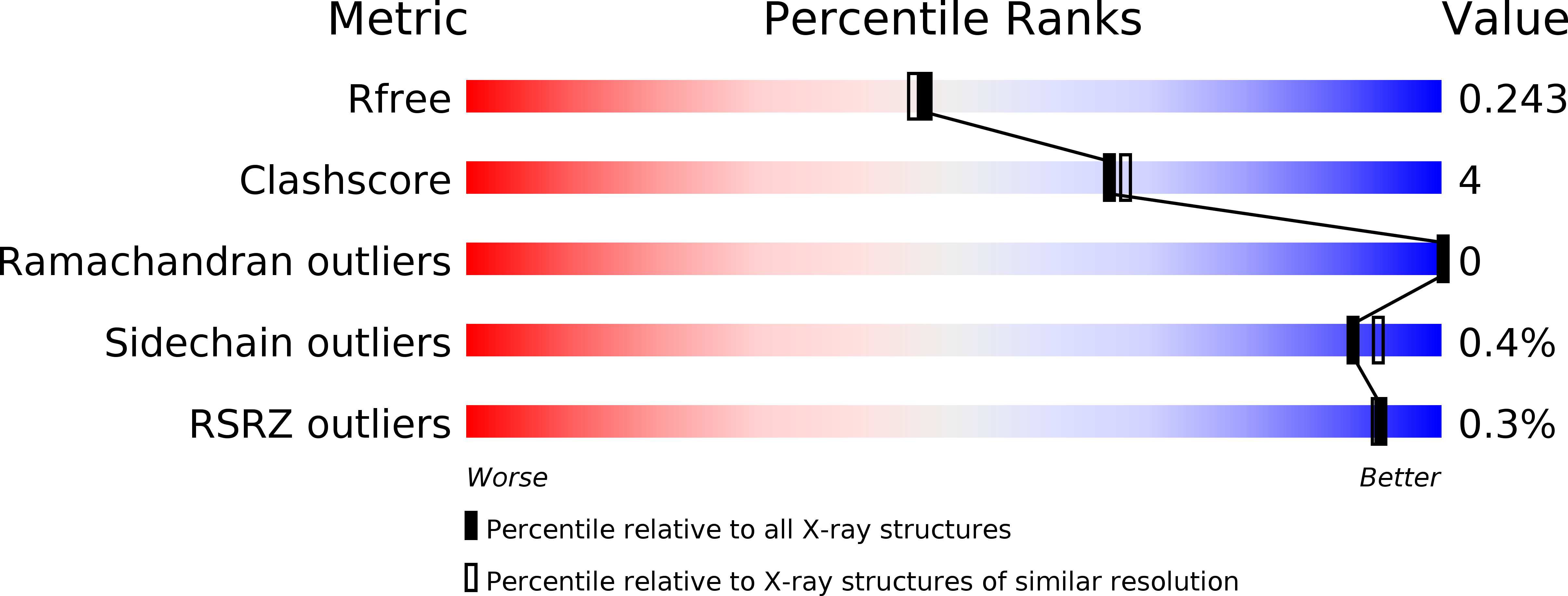Two Distinct Substrate Binding Modes for the Normal and Reverse Prenylation of Hapalindoles by the Prenyltransferase AmbP3
Wong, C.P., Awakawa, T., Nakashima, Y., Mori, T., Zhu, Q., Liu, X., Abe, I.(2018) Angew Chem Int Ed Engl 57: 560-563
- PubMed: 29178634
- DOI: https://doi.org/10.1002/anie.201710682
- Primary Citation of Related Structures:
5Y4G, 5Y72, 5Y7C, 5Y84 - PubMed Abstract:
The cyanobacterial prenyltransferase AmbP3 catalyzes the reverse prenylation of the tetracyclic indole alkaloid hapalindole U at its C-2 position. Interestingly, AmbP3 also accepts hapalindole A, a halogenated C-10 epimer of hapalindole U, and catalyzes normal prenylation at its C-2 position. The comparison of the two ternary crystal structures, AmbP3-DMSPP/hapalindole U and AmbP3-DMSPP/hapalindole A, at 1.65-2.00 Å resolution revealed two distinct orientations for the substrate binding that define reverse or normal prenylation. The tolerance of the enzyme for these altered orientations is attributed to the hydrophobicity of the substrate binding pocket and the plasticity of the amino acids surrounding the allyl group of the prenyl donor. This is the first study to provide the intimate structural basis for the normal and reverse prenylations catalyzed by a single enzyme, and it offers novel insight into the engineered biosynthesis of prenylated natural products.
Organizational Affiliation:
Graduate School of Pharmaceutical Sciences, The University of Tokyo, 7-3-1 Hongo, Bunkyo-ku, Tokyo, 113-0033, Japan.














